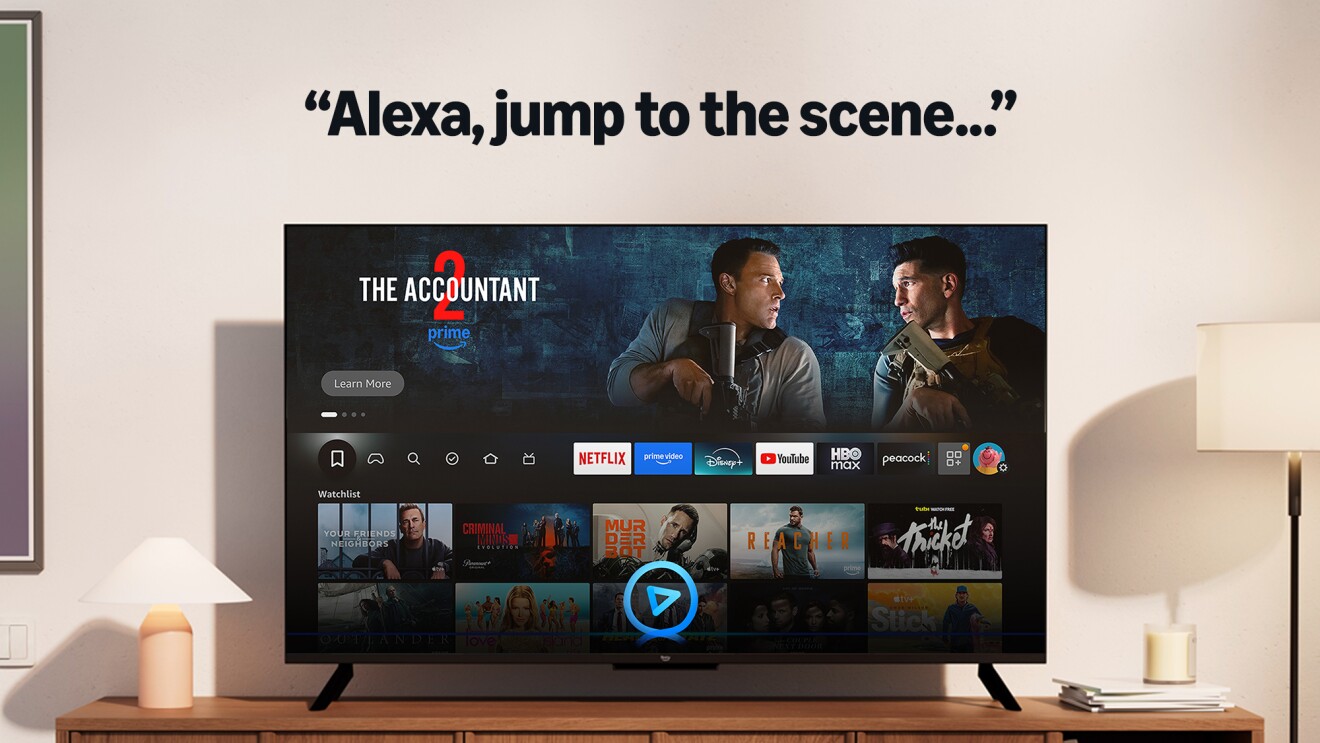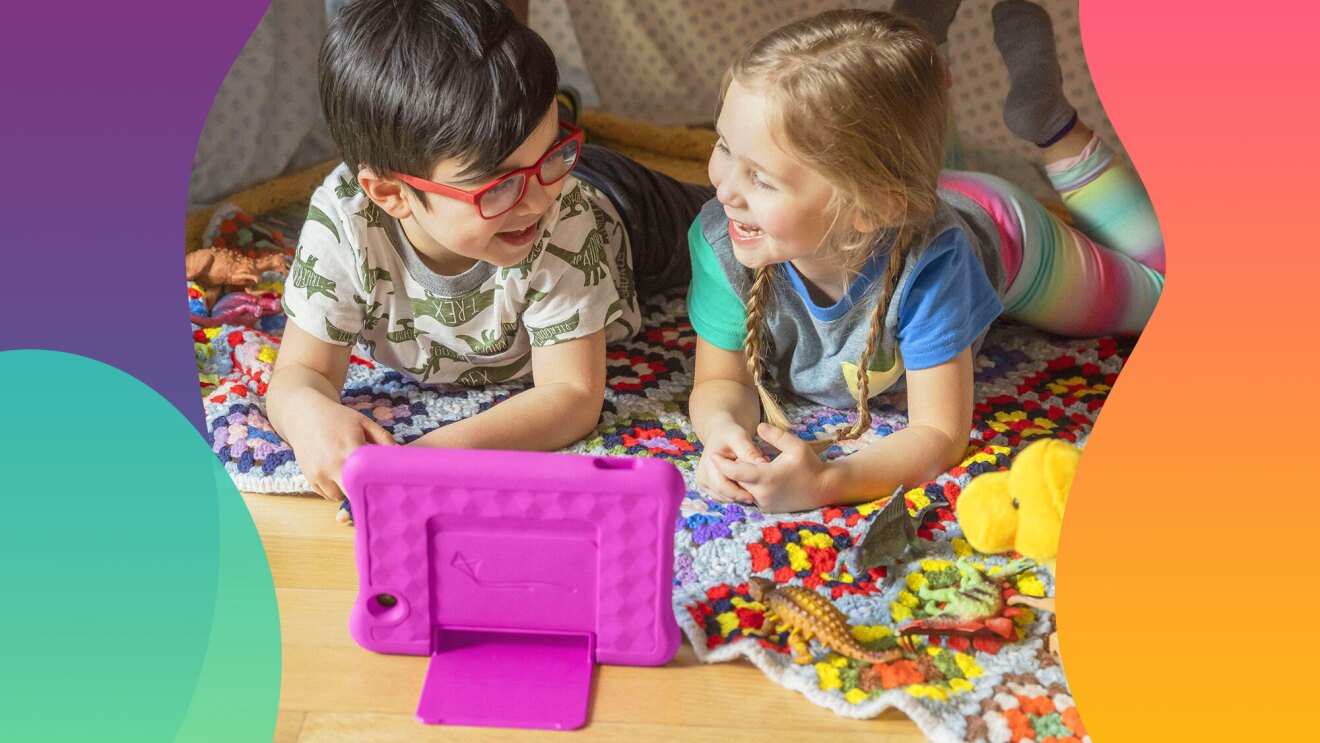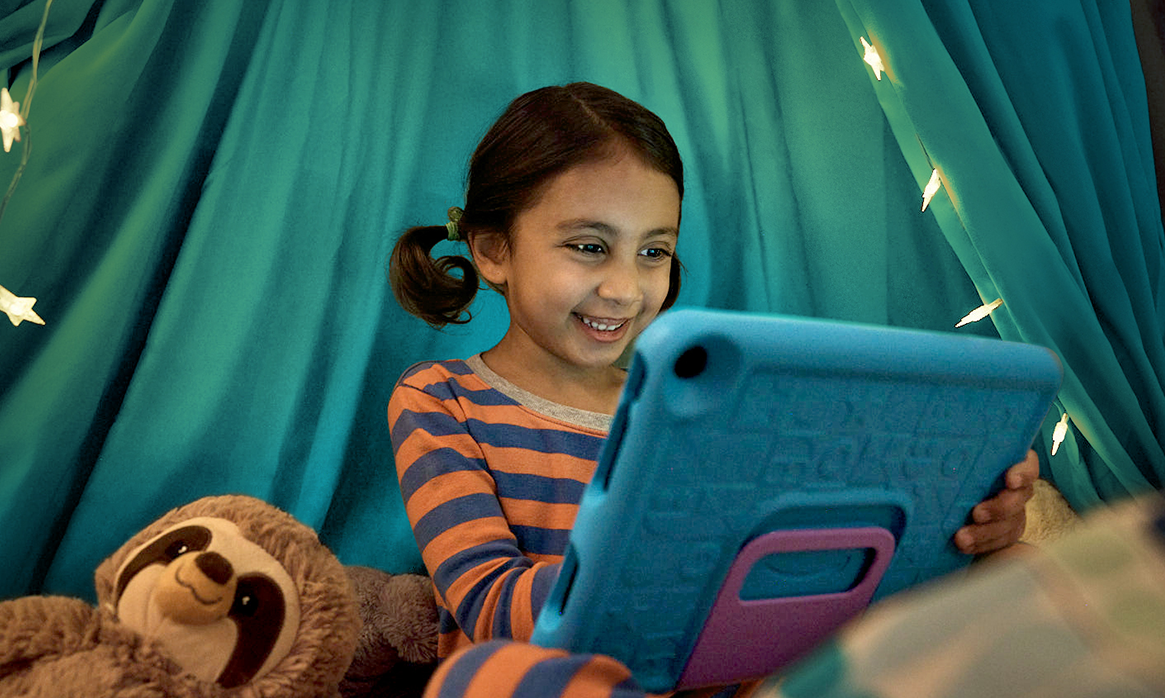We hear a lot about misinformation, disinformation, and “fake news,” but whatever you call it, it’s a symptom of much larger problems, including the lack of media literacy.
In fact, in November 2016, Stanford Graduate School of Education found that more than 80% of middle and high school students surveyed were unable to distinguish between advertisements and real news stories. In November 2019, the researchers published a follow-up study and found that two-thirds of students "couldn’t tell the difference between news stories and ads (set off by the words 'Sponsored Content') on Slate’s homepage," and 90% "received no credit on four of six tasks." As the study concluded, "Reliable information is to civic health what proper sanitation and potable water are to public health. A polluted information supply imperils our nation's civic health."
As parents and educators, it’s our job to help our students become more savvy consumers of information. But it's not just kids who need a lesson in media literacy; adults do as well. A December 2016 Pew study found that nearly a quarter of adults admitted to sharing fake news in the past. Most didn't know it was fake when they shared it.
Proliferation of information sources
Until fairly recently, media were concentrated in the hands of a few organizations, but now it's all around us. In addition to the so-called "mainstream media" outlets, there are now many online blogs, podcasts, and videos from a wide variety of providers from all walks of life, as well as social media, where anyone can be a "citizen journalist." While this has created a vibrant and dynamic array of information sources, it has also made it more difficult to know which sources can be trusted. So regardless of whether you're a media consumer, media creator, or both, the need for media literacy is greater now than ever.
And, sad to say, we can’t always trust people in authority to tell "the truth, the whole truth, and nothing but the truth." Trust in traditional news media has declined across all political groups, and there are far too many cases where government officials and corporate leaders have been caught telling falsehoods, whether deliberately or because they were misinformed. There are also popular culture examples such as false claims about celebrity deaths and doctored photos.
In this uncertain climate, how can parents and educators help the children they care for to be critical but not jaded consumers of the media they encounter?
Not all false information is disinformation
Dictionary.com defines misinformation as "false information that is spread, regardless of whether there is intent to mislead." Disinformation is defined as "deliberately misleading or biased information; manipulated narrative or facts; propaganda." Either way, it’s false information that should never be spread or relied on.
Without intent to deceive, false information may be misinformation but not necessarily disinformation or so-called "fake news." It may have been posted or spread by mistake (and should be immediately corrected). Likewise, there are examples of people simply not being able to discern entertainment or parody from reality. The Onion is an example of a parody site designed to amuse people with decidedly false information. The information is false, but the intention is clearly comedic, though that might not be obvious to all who see it.
Not everything that’s inaccurate is necessarily a deliberate lie. The once widely held view that the world is flat was based on what people thought they knew at the time. Information about the COVID-19 pandemic evolved as scientists discovered more facts and as the virus evolved. Early recommendations that were later revised were based on the best information available at the time.
The difference between fact and opinion in the news
Both fact and opinion help shape our understanding of information. The facts are the foundation, while the opinions help us determine how those facts affect the people and society with whom we are connected.
- Facts: High-quality news should focus on the indisputable information needed to relay events. This includes the people involved, the places where it happened, and any additional important details and evidence.
- Predictions: Sometimes news organizations engage in predictions based on what they know at the time, such as predicting the results of an election based on polling, the path of a wildfire, or a weather report based on meteorological data. These should be clearly labeled as predictions and be based on the facts that are known at the time while acknowledging they are subject to change as conditions change. There’s a big difference between a meteorologist incorrectly predicting tomorrow’s weather vs. lying about yesterday’s weather.
- Opinions: An important part of the news involves an individual’s interpretation of the meaning or impact of an event or facts. Opinion can be a specific point of view or can be meant to convince others, as long as it is clearly labeled as opinion.
Even opinion columnists and commentators should place a high value on facts and, when crafting editorials, make sure their opinions are backed up by factual evidence.
Factual reporting sometimes also includes or is supplemented by analysis. Here the writer or speaker—who may be a news reporter but could also be an academic researcher, a former government official, or other expert—will put the story in context or quote experts who explain the meaning or implications of the facts. This is not the same as an opinion piece where the person is expressing a point of view. The purpose is to help the reader or viewer better understand the meaning of the facts. Though analysis may include quotes from people with different points of view, its purpose should be to explain, not to convince. Sometimes journalists will interview "analysts" who do have a point of view or partisan affiliation, which is OK as long as their affiliations are made clear.
Students also need to understand the difference between speculation and fact. Sometimes all the facts aren't in, such as immediately after an attack when it's not known whether or not it's terrorism. Journalists have an obligation to present the facts; and while they can offer various theories as to the cause, they shouldn't assume a cause until it's confirmed.
Finally, it is important to point out that sometimes advertisements are designed to look like news reports but are not. One way to recognize them is to look closely at whether the report is using the information to encourage the audience to purchase a particular product or support a candidate or cause. Sometimes they are labeled as "sponsored stories" or advertisements, but sometimes it’s totally up to the reader or viewer to figure out that they're ads, not editorial content.
Practical Tips
- Share these explanations of fact and opinion with your children or students and ask them to apply these explanations to a news story that is important to them.
- Teachers can ask students to take a news story or a historical event and write two editorials from opposing perspectives. It could be about a bill before a legislative body, a school issue, or the significance of a scientific discovery or a controversial historical event. The idea is to push them to see the same set of facts from at least two different perspectives.
- Point out advertisements or sponsored stories masquerading as news in social media streams or on news websites and ask children to evaluate them.
Resources
Deep fakes
Today's adults grew up during a time when they could pretty much believe their own eyes, but that's no longer necessarily true. Modern technology, including sophisticated video, audio, and image editing programs and artificial intelligence, make it possible to create videos, audio recordings, or images that are not what they appear to be. As Rob Toews wrote in a 2020 Forbes post, "Several deep fake videos have gone viral recently, giving millions around the world their first taste of this new technology: President Obama using an expletive to describe President Trump, Mark Zuckerberg admitting that Facebook's true goal is to manipulate and exploit its users, Bill Hader morphing into Al Pacino on a late-night talk show."
When you see or hear something that seems out of place, do some fact-checking to see if it is true or a potential deep fake.
The difference between mistakes and lies
Whether the author is a professional journalist or someone posting on their social media account, knowingly publishing false information online or in print is always wrong, but recognizing intentional lying is not as simple as it might seem. There are different kinds of lies:
- Blatant lies: Someone knowingly states a falsehoo
- Partial lies: Someone uses one fact to make unreasonable assumptions or extrapolations. The foundational fact is true, but the rest of the information is false.
- Lies by omission: Someone knows about pertinent facts and chooses to leave them out of a report in order to sway the audience in a certain way.
Editors do make decisions about which stories to cover and facts to emphasize on the limited pages or during the limited air time available to them, but these decisions are based on what they feel is important to their audience. Without these decisions, The New York Times would be thousands of pages long and evening news anchors would have to speak faster than an auctioneer. While websites can go into greater detail than print or broadcast, even they have to limit what they cover to keep the reader’s attention and avoid drowning readers with too much detail or too many stories.
Mistakes are not the same as lies. If a person reports false information based on an unintentional error, they should be willing to correct it as soon as the error is discovered.
It all comes down to the intent of the author. As parents and educators, we must encourage children to look past the information and consider the reliability and motivations of the source.
Practical tips
- Clearly identify the difference between mistakes and lies and be sure children and students understand.
- If you come across something that is falsely reported, help young learners investigate more about the source. Then ask them whether that source would have any reason to spread false information.
- Be sure to talk with them about the potential harm that could be caused by allowing false information to stand uncorrected.
Resource
Dealing with conflicting reports
Often, as new information is coming to light or even when we review hotly contested historical events, there might be conflicting reports by different sources. For instance, when learning about the Battle at Lexington and Concord, also known as the "Shot Heard 'Round the World," students read first-hand accounts from witnesses who report conflicting information. When faced with this, sometimes young learners will look to adults and ask which is accurate. Adults should redirect that thinking toward examining why there might be conflicting reports in the first place. Sometimes what looks like conflicting reports or “facts” is actually two different perspectives or “sides” that need to be examined. Other times there are so-called conflicting facts because only one set of information is actually true while the other is a mistake or a lie. The tips below can help adults work with young people to figure out the difference.
Practical tips
When faced with the reporting of conflicting facts, encourage students to take their time to develop their own understandings. Analyzing and interpreting information is not a race. Ask them:
- How many other sources are reporting the same facts? Find corroboration.
- Do the corroborating sources seem to be reporting other believable facts?
- Do any of the sources or facts seem biased or skewed to favor one side?
If new information comes to light that disproves a previously held opinion, be open to sharing with children that it is OK to change one’s understandings in that circumstance.
In any of these conversations, be sure to stay calm. Children can feel anxious and uncertain when they are confused about information, and a calm adult can help them think rationally.
Fact-checking resources
General resources
Expert tip
Emotional appeals
Sometimes the author or creator of a piece of media intends to appeal to the emotions of the people consuming the media. As you may know from watching, emotion can be a big part of both commercial advertising and political messaging. If you pay attention to ads from carmakers, cosmetic companies, or beverage brands, you’ll notice that they are often selling a lifestyle along with their products. The way they use imaging, music, and the types of people they feature in their ads impact the way we emotionally react to the ad. The same can be true with political messaging, which seeks to play on people’s emotions—both their hopes and their fears—and sometimes makes vague promises without being specific as to exactly how the candidate will affect that change.
Sometimes feelings of inadequacy or even self-loathing can be triggered by looking at magazine covers and billboards, watching unrealistic lifestyles portrayed on TV and in movies, or wishing that you were as attractive or your life was as great as others appear to be on social media. When people who are already a little insecure compare their own lives to idealized versions, it can exacerbate those insecurities.
As both children and adults, it is OK to feel these emotions as long as we recognize the media that triggered them and do not let them control us. Parents will likely experience media-triggered emotions right in front of their children, while teachers must be careful not to allow media-triggered emotions to bleed into their classroom practice. In either role, it is worthwhile to share with children how you move past those emotions and start thinking rationally.
Practical tips
- Teach children to recognize their emotions from a young age. It’s never too late to start, either. Adolescents and teens sometimes need help with emotion recognition as well. Then, when media triggers emotions, they will be better equipped to recognize which information caused them to feel that way.
- While watching TV or browsing online with your child, point out ads that are appealing to emotion and discuss them openly.
- Once the emotion has been managed, engage children to think logically about how they can take action that is positive in response to that information.
Expert tip
Teaching kids what to do when they see falsehoods shared online
If you see something that looks like it might be incorrect but you’re not sure, definitely don’t pass it on until you do a little research. One way to start is to highlight or copy part of the text and search to see if others have commented, verified, or disputed the story.
Aside from not spreading false information, consider intervening so that others know not to spread it, too. Sometimes the person who has shared the story isn’t aware that it’s likely false, so a gentle nudge might be all that’s necessary for them to either take it down or at least think a bit more critically the next time they’re tempted to pass on a questionable story.
For decades we have told students to stand up to bullying and teasing and that being a bystander is not acceptable. We need to apply this same standard to fake news and can teach them how to stand up to false information without provoking more conflict. One way is by scripting comments and responses. Here are a few examples:
- Hey, friend! A lot of people are concerned about this. It turns out that it is not an accurate story. Here is a link that explains what’s going on. Thought you’d want to know that it has been disputed. You might want to take it down so people don’t get confused.
If your learners are willing to share the truth on their own timeline or feed—and not merely in the comments responding to the posts of others—here are more examples:
- I’ve seen many of my friends post links to websites and articles claiming _______. This post explains the truth. Let’s spread the truth together. Please share!
- In case you’ve seen posts about ______ and have become concerned, this information will clear things up. Lots of people were confused. You’re not alone!
We can all raise the bar together. Our goal should not be to merely teach students to analyze the media they consume but also how to create and share media that make the internet a better place. Use these strategies when you consume media and be sure to share these strategies with your students and children, too.
Closing thoughts
Our democracy depends on people’s ability to make informed decisions in the voting booth, the marketplace, and in all aspects of their personal, academic, and professional lives. Often this requires analyzing the information that’s available to them and sometimes other people’s informed opinions. But one thing is for sure: It’s hard to make any type of good decision without the skills to distinguish between what is true and what is false or disputable.
We also live in a pluralistic world where people form different opinions on everything from what smartphone to buy to what’s the healthiest diet, what school to attend, and so much more. Reasonable people will form different opinions on any of these subjects, but as Daniel Patrick Moynihan once said, “Everyone is entitled to his own opinion but not his own facts.”
As parents and educators, it’s our job to help young people hone their critical thinking skills so they can analyze information effectively and come to their own conclusions. It’s essential for all aspects of their lives and all decisions they will face, ranging from what to buy to what media to create and how, who to form relationships with, and, of course, how to vote. We should not tell them what to think but rather should teach them how to think for themselves, based on accurate information.
Finally, we need to distinguish between healthy skepticism and unhealthy cynicism. It’s good to question media, regardless of how well established it may be, but it’s also essential to learn how to glean truth and insight from the media around us so that, together, we can develop a better understanding of our world and how to make it better.
Additional resources
Trending news and stories









